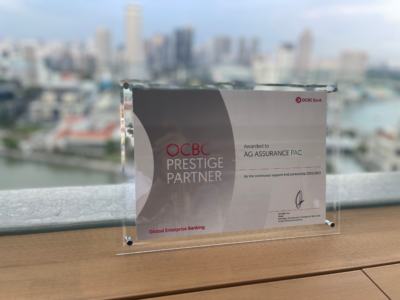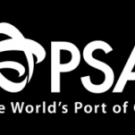For businesses planning to expand overseas, multi-currency transactions have become a routine part of global operations. These transactions often range from paying remote employees and international suppliers to invoicing clients in different countries.
However, this requires a proper accounting framework to be in place, as fluctuating exchange rates, inconsistent reporting, and compliance risks can potentially erode profitability. That’s why understanding what multi-currency accounting is and how it works is essential for any growing company.
What Is Multi-Currency Accounting?
Multi-currency accounting is a financial practice that allows businesses to manage transactions and maintain records in multiple foreign currencies. It plays a critical role for companies engaged in international trade and is often mandated by national regulations to ensure accurate and consistent financial reporting. By enabling companies to present clear, standardised financial statements across different currencies, it supports both legal compliance and operational efficiency.
Key Components of the Multi-Currency Accounting Process
A robust multi-currency accounting system should include, at the very least, these three essential features:
- Exchange Rate Tracking: This allows businesses to stay updated with constantly changing foreign exchange rates.
- Currency Rate Type Management: This enables the system to handle both floating rates (which vary with market conditions) and fixed rates (which are pegged to another currency).
- Denominated Accounts: This lets companies maintain balances in two currencies simultaneously: the base currency and the transaction currency (also known as the currency of denomination). For example, if a Singaporean company buys from a Japanese supplier, the system should be able to track balances in both Singaporean dollars (base currency) and Japanese yen (transaction currency).
Why Is Multi-Currency Accounting Necessary?
It’s important to note that multi-currency accounting goes beyond recording transactions. It involves converting foreign currency amounts into the company’s base currency using appropriate exchange rates and ensuring proper adjustments for financial reporting. This makes the data more transparent and meaningful for internal analysis and strategic decision-making.
Moreover, multi-currency accounting provides a layer of protection against currency volatility. Businesses can adopt hedging strategies, such as forward contracts or currency options, to manage exchange rate risks when dealing with payments in various currencies, helping to stabilise cash flows and safeguard profit margins.
Key Challenges Companies May Face with Multi-Currency Accounting
Some of the challenges businesses may face when working with different currencies may include the following:
1. Exchange Rate Fluctuations
One of the most significant challenges in multi-currency accounting is the unpredictable movement of exchange rates between currencies. These fluctuations can happen quickly and dramatically, directly impacting a company’s financial performance by causing unexpected gains or losses in profit and loss statements.
When exchange rate movements are not properly accounted for, financial statements can present a misleading picture of the company’s financial health. This could confuse shareholders and hinder executives’ ability to budget, forecast, or make informed pricing and investment decisions based on distorted financial data.
2. Differences in Accounting Standards
Operating across borders means dealing with a variety of national accounting frameworks, which can make consolidating financial statements particularly difficult. Each country may have its own set of accounting rules, formats, and valuation methods, complicating compliance and increasing administrative workload.
Key challenges include inconsistent reporting formats, which require additional work to standardise for internal and external stakeholders, and valuation discrepancies in how assets and liabilities are assessed.
3. Transaction Costs
Foreign currency transactions often incur extra costs, including bank fees, brokerage charges, and unfavourable exchange rates. For businesses that engage in transactions frequently or operate on tight margins, these costs can significantly impact profitability if not properly managed.
Additionally, banks and payment processors may apply exchange rates that differ from market rates, resulting in hidden costs that further inflate transaction expenses. Without proactive management, these recurring charges can quietly erode a company’s bottom line.
4. Liquidity Management
Managing liquidity across multiple currencies adds another layer of complexity to financial operations. Companies must ensure they have enough funds in each relevant currency to meet obligations without resorting to costly last-minute conversions.
This requires strategic cash flow planning and real-time visibility into currency balances, which can be both operationally demanding and time-consuming.

Strategies to Consider for Multi-Currency Accounting
As global operations become the norm for many Singapore-based businesses, implementing effective strategies to manage multi-currency accounting is essential. These strategies not only help maintain compliance and accuracy but also protect profitability in the face of currency volatility and cross-border complexity.
1. Use of Multi-Currency Accounting Software
Businesses should adopt accounting software that offers robust multi-currency features, including real-time exchange rate tracking and seamless integration with ERP and financial systems. As such, consider software with features, such as the following:
- Automatic currency conversion – This helps reduce manual calculations and ensures accuracy.
- Unified financial reporting – It allows accounting teams to consolidate financial data across different currencies and regions.
- Built-in regulatory compliance tools – This feature helps support accurate reporting and adherence to international accounting standards.
By leveraging such software, organisations can produce consolidated reports more efficiently and make faster, data-driven decisions with greater confidence.
2. Currency Hedging Techniques
Currency hedging is a method often used to manage risks from exchange rate fluctuations. Two common hedging instruments include forward contracts and currency options.
Forward contracts are agreements to buy or sell a specific currency at a predetermined rate on a future date, providing certainty in financial planning. On the other hand, options contracts allow the holder to exchange currency at a set rate in the future, offering flexibility while still limiting exposure to adverse rate movements.
3. Income and Supplier Diversification
While not a direct accounting tactic, income and supplier diversification could be a risk-balancing strategy to consider. By engaging with suppliers and clients across different regions, your business can spread exposure to currency fluctuations, reducing the financial impact of volatility in any one currency.
This approach ensures that the business is not overly dependent on one region’s economic performance or exchange rate conditions, improving financial resilience.
4. Multi-Currency Bank Accounts
Multi-currency bank accounts allow businesses to hold, receive, and make payments in various currencies from a single account. These accounts are particularly valuable for companies that deal with international clients or suppliers, as they facilitate local-currency transactions and reduce the need for constant conversions.
Benefits include improved payment processing efficiency and simplified financial management on one banking platform. Using multi-currency accounts also supports more accurate liquidity planning and simplifies reconciliation for businesses managing finances across multiple markets.
Outsource Your Multi-Currency Accounting with AG
Effectively managing foreign currencies is a necessity for businesses in Singapore operating internationally. Multi-currency accounting ensures that your business stays compliant, improves decision-making through accurate reporting, and protects your margins from currency volatility.
To streamline your multi-currency accounting process, it’s essential to adopt robust software solutions and sound financial strategies. More importantly, working with experienced professionals can help ensure accuracy, efficiency, and compliance every step of the way.
At AG, a trusted accounting company in Singapore, we offer expert support and outsourced accounting services, including multi-currency accounting solutions tailored to your business needs.
Let us help you build a scalable, compliant, and future-ready financial operation.
For more accounting insights, check out how to maximise allowable business expenses for tax savings and how to plan corporate tax filings to maximise tax benefits.














